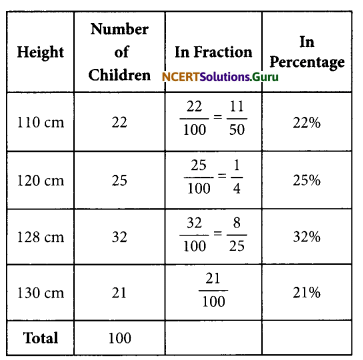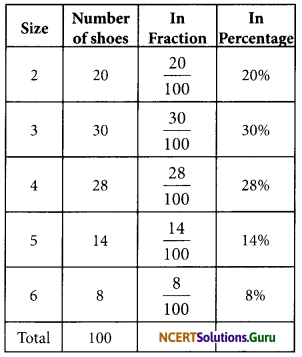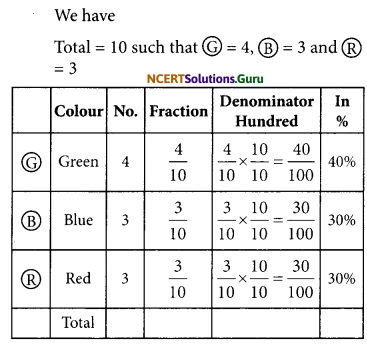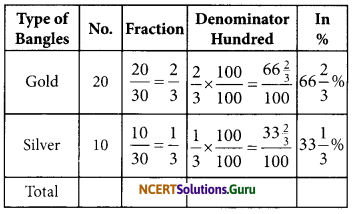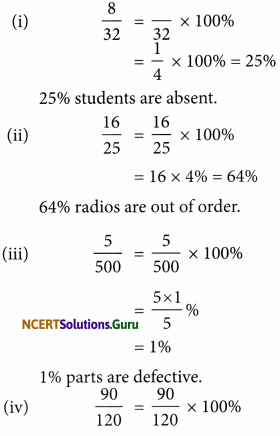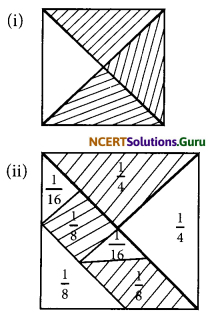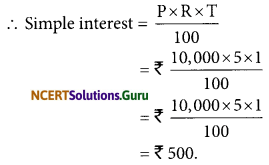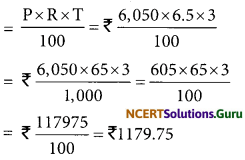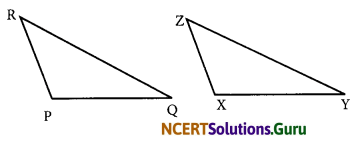NCERT Solutions for Class 7 Hindi Vasant Chapter 1 हम पंछी उन्मुक्त गगन के
These NCERT Solutions for Class 7 Hindi Vasant Chapter 1 हम पंछी उन्मुक्त गगन के Questions and Answers are prepared by our highly skilled subject experts.
हम पंछी उन्मुक्त गगन के NCERT Solutions for Class 7 Hindi Vasant Chapter 1
Class 7 Hindi Chapter 1 हम पंछी उन्मुक्त गगन के Textbook Questions and Answers
कविता से
प्रश्न 1.
हर तरह की सुख सुविधाएँ पाकर भी पक्षी पिंजरे में बंद क्यों नहीं रहना चाहते?
उत्तर:
हर तरह की सुख सुविधाएँ पाकर भी पक्षी पिंजरे में बंद इसलिए नहीं रहना चाहते क्योंकि उन्हें स्वतंत्रता प्यारी है। वह कष्ट उठाकर भी स्वच्छंद आकाश में उड़ना पसंद करते हैं। पिंजरे में बंद रहकर मिलने वाली कोई भी सुविधा उसे सुख नहीं दे सकती। उन्हें अपनी उड़ान में कोई बाधा पसंद नहीं है। वे तो उन्मुक्त गगन के पंछी हैं।
प्रश्न 2.
पक्षी उन्मुक्त रहकर अपनी कौन-कौन सी इच्छाएँ पूरी करना चाहते हैं ?
उत्तर:
- पक्षी उन्मुक्त रहकर खुले आकाश में गाना चाहते हैं।
- वे नदी एवं झरनों का बहता जल पीना चाहते हैं।
- वे अपनी स्वाभाविक गति से उड़ना चाहते हैं।
- वे नीले आकाश में उड़कर अनार के दानों रूपी तारों को चुगना चाहते हैं।
प्रश्न 3.
भाव स्पष्ट कीजिएया तो क्षितिज मिलन बन जाता/या तनती साँसों की डोरी।
उत्तर:
भाव-पक्षी हर हाल में आकाश में उड़ना चाहते हैं। वे उड़ते हुए अपने लक्ष्य तक पहुँचना चाहते हैं अथवा अपने इस प्रयास में अपने आपको पूरी तरह थका डालना चाहते हैं।
![]()
कविता से आगे
प्रश्न 1.
बहुत से लोग पक्षी पालते हैं-
(क) पक्षियों को पालना उचित है अथवा नहीं ? अपने विचार लिखिए।
(ख) क्या आपने या आपकी जानकारी में किसी ने कभी कोई पक्षी पाला है? उसकी देख-रेख किस प्रकार की जाती होगी, लिखिए।
उत्तर:
(क) सभी को स्वतंत्र रहने का अधिकार है। यदि हम पक्षियों को पालेंगे तो यह उनकी स्वतंत्रता का हनन होगा। हमें उनको स्वच्छंद आकाश में उड़ने देना चाहिए। आकाश में उड़ते और चहचहाते हुए पक्षी भले लगते हैं। यदि कोई हमें कैद करके रखे तो हमें कैसा लगेगा ? हमें यह अवश्य सोचना चाहिए।
(ख) हमारे पड़ोस के घर में तोता पाला हुआ है। वे उस तोते को पिंजरे में बंद रखते हैं। तोता पिंजरे में ही उनके द्वारा दिया गया अन्न व जल ग्रहण करता है। तोते के इस बंधन को देखकर तरस आता है।
प्रश्न 2.
पक्षियों को पिंजरे में बंद करने से केवल उनकी आजादी का हनन ही नहीं होता, अपितु पर्यावरण भी प्रभावित होता है। इस विषय पर दस पंक्तियों में अपने विचार लिखिए।
उत्तर:
पक्षियों को पिंजरे में बंद रखने से उनकी आज़ादी का हनन होता है। हमें यह अधिकार बिल्कुल भी नहीं है कि हम किसी को कैद करें। ईश्वर ने उनको भी पैदा किया है। उनको भी स्वच्छंद रहने का अधिकार दिया है। मनुष्य इस सृष्टि का सबसे दुष्ट प्राणी है। यह अपनी थोड़ी-सी खुशी के लिए दूसरों को कष्ट देता है। पक्षियों के बंधन में रहने से पर्यावरण को हानि होती है। वन के अंदर बाघों का होना और उपवनों में पक्षियों का चहचहाना किसे अच्छा नहीं लगता होगा। पक्षी पर्यावरण को संतुलित बनाकर रखते हैं। पक्षियों को देखकर हम मौसम के बारे में कई जानकारियाँ प्राप्त कर सकते हैं-जैसे-गौरेया जब रेत में खिलवाड़ करती है तो इसे वर्षा होने का संकेत माना जाता है। पक्षी जब किसी वृक्ष के फल को खाते हैं तो वे अपनी बीट द्वारा उस फल के बीजों को दूसरे स्थान पर ले जाते हैं। बरगद-पीपल जैसे वृक्षों की उत्पत्ति में पक्षी बहुत सहायक हैं। ये वृक्ष छायादार होने के साथ-साथ पर्यावरण को भी शुद्ध बनाते हैं।
अनुमान और कल्पना
प्रश्न 1.
क्या आपको लगता है कि मानव की वर्तमान जीवन-शैली और शहरीकरण से जुड़ी योजनाएँ पक्षियों के लिए घातक हैं ? पक्षियों से रहित वातावरण में अनेक समस्याएँ उत्पन्न हो सकती हैं। इन समस्याओं से बचने के लिए हमें क्या करना चाहिए ? उक्त विषय पर वाद-विवाद प्रतियोगिता का आयोजन कीजिए।
उत्तर:
अध्यापक छात्रों के बीच इस विषय पर वाद-विवाद प्रतियोगिता का आयोजन करें।
प्रश्न 2.
यदि आपके घर के किसी स्थान पर किसी पक्षी ने अपना आवास बनाया है और किसी कारणवश आपको अपना घर बदलना पड़ रहा है तो आप उस पक्षी के लिए किस तरह के प्रबंध करना आवश्यक समझेंगे? लिखिए।
उत्तर:
यदि उस पक्षी ने उस स्थान पर अंडे दे रखे हैं तो हम कुछ दिन इंतजार करेंगे। जब अंडों से निकले बच्चे उड़ान भरने लायक हो जाएँगे तब उसके घोंसले को किसी दूसरे स्थान पर रख देंगे तथा हम उनकी देखभाल भी करते रहेंगे।
भाषा की बात
प्रश्न 1.
स्वर्ण-शृंखला और लाल किरण-सी में रेखांकित शब्द गुणवाचक विशेषण हैं। कविता से ढूँढ़कर इस प्रकार के तीन और उदाहरण लिखिए।
उत्तर:
उन्मुक्त गगन, पुलकित पंख, बहता जल, कटुक-निबौरी, कनक-कटोरी, नीले नभ, सीमाहीन-क्षितिज, आकुल-उड़ान।
प्रश्न 2.
“भूखे-प्यासे’ में द्वंद्व समास है। इन दोनों शब्दों के बीच लगे चिह्न को सामासिक चिह्न (-) कहते हैं। इस चिह्न से ‘और’ का संकेत मिलता है, जैसे-भूखे-प्यासे = भूखे और प्यासे।
इस प्रकार के दस अन्य उदाहरण खोजकर लिखिए।
उत्तर:
माता-पिता = माता और पिता
भाई-बहिन = भाई और बहिन
अच्छा-बुरा = अच्छा और बुरा
सुख-दुःख = सुख और दुःख
आकाश-पाताल = आकाश और पाताल
भीम-अर्जुन = भीम और अर्जुन
सीता-गीता = सीता और गीता
पाप-पुण्य = पाप और पुण्य
दिन-रात = दिन और रात।
दूध-दही = दूध और दही।
![]()
काव्यांश की सप्रसंग व्याख्या एवं अर्थग्रहण-संबंधी प्रश्नोत्तर
1. हम पंछी ……………………………… मैदा से।
शब्दार्थः पंछी-पक्षी, उन्मुक्त गगन-खुला आकाश, पिंजरबद्ध-पिंजरे में बँधकर (कैद होकर), कनक-सोना, पुलकित-प्रसन्नचित्त, कटुक-कड़वी, निबौरी-नीम का फल, कनक कटोरी-सोने की कटोरी।
प्रसंग- प्रस्तुत पंक्तियाँ हमारी पाठ्य पुस्तक ‘बसंत भाग-2 में संकलित कविता’ ‘हम पंछी उन्मुक्त गगन के से ली गई हैं। इसके लेखक ‘श्री शिव मंगल सिंह ‘सुमन’ जी हैं। कवि ने इस पंक्तियों में स्वतंत्रता के महत्त्व को दर्शाया है। उनका कहना है कि एक पक्षी भी स्वतंत्रता के महत्त्व को भली-भाँति जानता है वह किसी भी प्रकार का बंधन स्वीकार नहीं करता।
व्याख्या- पक्षी कहते हैं कि हम स्वच्छंद आकाश में विचरण करने वाले हैं। यदि हमको पिंजरे में कैद करके रखा जाएगा तो हमारा गायन जो हमारी चहचहाट के रूप में प्रकट होता है, वह समाप्त हो जाएगा। हमको स्वतंत्रता का जीवन पसंद है। पिंजरे में बंद करके हमको चाहे कितनी भी सुविधाएँ क्यों न दी जाएँ हमारे लिए वे व्यर्थ हैं। यदि हमको सोने के पिंजरे में रखा जाए तो भी हम पंख फड़फड़ाकर स्वतंत्र होने की हर संभव कोशिश करेंगे भले ही हमारे कोमल पंख पिंजरे की तीलियों से टकराकर टूट जाएँ।
पक्षी आगे कहते हैं कि हम तो बहता हुआ जल पीने वाले हैं, जो स्वतंत्र रहकर ही मिल सकता है। यदि हमको पिंजरे में बंद किया तो हम भूखे-प्यासे मर जाएँगे परंतु पिंजरे में मिलने वाली सुख-सुविधाओं को स्वीकार नहीं करेंगे। हमारे लिए तो सोने की कटोरी में मिलने वाले मैदे के पकवान से कहीं बेहतर नीम की कड़वी निबौरी है जिसको हम स्वतंत्रता पूर्वक ग्रहण करते हैं।
अर्थग्रहण संबंधी प्रश्नोत्तर
प्रश्न 1.
पक्षी पिंजरे में कैद होकर क्यों नहीं गा पाएँगे ?
उत्तर:
पक्षी खुले आकाश में विचरण करते हैं। पिंजरे में कैद होना उनको पसंद नहीं। स्वतंत्र रहकर ही उनका स्वभाविक गायन हो सकता है। पिंजरे में कैद रहकर तो वे अपनी चहचहाट भूल जाते हैं।
प्रश्न 2.
पक्षियों के पंख क्यों टूट जायेंगे ?
उत्तर:
पक्षी आजाद होने के लिए अपने पंख फड़फड़ाएँगे उनके पंख पिंजरे की तीलियों से टकराकर टूट जाएँगे। वे फिर भी पिंजरे से बाहर निकलने का प्रयास करते रहेंगे।
प्रश्न 3.
पक्षी कनक कटोरी की मैदा से नीम की कड़वी निबौरी को क्यों अच्छा मानते हैं ?
उत्तर:
सोने की कटोरी के मैदे को खाने के लिए उन्हें अपनी स्वतंत्रता गंवानी पड़ेगी जबकि नीम की कड़वी निबौरी को वे स्वतंत्र रहकर, स्वच्छंद आकाश में उड़कर अपनी इच्छानुसार ग्रहण कर सकते हैं। आजादी से जो मिल जाता है उससे बढ़कर कोई वस्तु नहीं होती
2. स्वर्ण-शृंखला ……………………………. केदाने।
शब्दार्थः स्वर्ण शृंखला-सोने की जंजीर, गति-चाल, फुनगी-वृक्ष की शाखाओं का ऊपरी सिरा, अरमान-दिल की इच्छा, तारक-तारे।
प्रसंग- प्रस्तुत पंक्तियाँ ‘शिव मंगल सिंह सुमन’ रचित कविता ‘हम पंछी उन्मुक्त गगन के’ से ली गई हैं। कवि ने यहाँ पिंजरे में कैद पक्षी की मनोव्यथा का चित्रण किया है कि वे बंधन में पड़कर कैसे अपनी स्वभाविकता खो बैठे हैं। उनके मन के अरमान मन में ही रह गए।
व्याख्या- पक्षी कहते हैं कि सोने की जंजीरों में बँधकर हम अपनी स्वाभाविकता खो बैठे हैं। हम अपनी गति और आकाश में उड़ना बिल्कुल भूल गए। स्वच्छंद होकर उड़ने का जो सुख था अब वह केवल स्वप्न की ही बात रह गई। हम कैसे वृक्ष की शाखाओं की चोटियों पर बैठकर झूला झूलते थे, अब स्वप्न में ही स्वतंत्रता के इस सुख को अनुभव करते हैं।
पक्षी कहते हैं कि हमारे भी अरमान थे कि हम आकाश में स्वच्छंद होकर विचरण करें। हम नीले आकाश में सीमाओं तक जाकर उसको छूना चाहते थे। हम भी सूर्य की किरण के समान अपनी लाल चोंच को खोलकर आकाश में अनार के दानों रूपी तारों को चुगें। परंतु बंधन में पड़ जाने के कारण हमारी यह इच्छा हमारे मन में ही रह गई।
अर्थग्रहण संबंधी प्रश्नोत्तर
प्रश्न 1.
पक्षी अपनी गति और उड़ान क्यों भूल गए ?
उत्तर:
पक्षी लालच के कारण बंधन में पड़ गए, उनको पिंजरे में कैद कर लिया गया। इस कारण से उनकी स्वाभाविकता ही समाप्त हो गई और वे अपनी चाल व उड़ान सब भूल गए।
प्रश्न 2.
पक्षी किस प्रकार के स्वप्न देखते हैं ?
उत्तर:
पक्षी वृक्षों की शाखाओं की फुनगियों पर झूला झूलने का स्वप्न देखते हैं क्योंकि पिंजरे में बंद रहकर तो वे कुछ भी नहीं कर पाते।
प्रश्न 3.
पक्षियों के क्या-क्या अरमान थे ?
उत्तर:
पक्षियों के अरमान थे कि वे उड़ते हुए नीले आकाश में अंतिम छोर तक जाकर उसे छुएँ और सूर्य की किरण के समान अपनी लाल-चोंच से अनार के दानों जैसे तारों को चुनें।
![]()
3. होती सीमाहीन …………………………….. न डालो।
शब्दार्थः सीमाहीन-जिसकी कोई सीमा (हद) न हो, क्षितिज-जहाँ धरती आकाश मिलते हुए प्रतीत हों, होड़ा-होड़ी-प्रतिस्पर्धा, नीड़-घोंसला, आश्रय-सहारा, आकुल-बेचैन, विघ्न-बाधा।
प्रसंग- प्रस्तुत पंक्तियाँ हमारी पाठ्य पुस्तक ‘बसंत भाग-2 में संकलित कविता ‘हम पंछी उन्मुक्त गगन के ‘ से ली गई हैं। इसके लेखक ‘श्री शिव मंगल सिंह सुमन’ जी हैं। पक्षी उन्मुक्त गगन में उड़ना चाहते हैं। वे मनुष्य से अपेक्षा करते हैं कि वे उनको आश्रय भले ही न दें परंतु उनको स्वच्छंद होकर खुले आकाश में उड़ने दें।
व्याख्या- पक्षी खुले आकाश में उड़ने की कामना करते हुए कहते हैं कि यदि हम खुले आकाश में उड़ते तो हमारा मुकाबला सीमाहीन क्षितिज से होता। हमारे दोनों पंख आगे बढ़ने के लिए एक-दूसरे से अधिक बल लगाते। हम उस स्थल पर पहुँच जाते जहाँ यह धरती और आकाश मिलता हुआ दिखाई देता है। ऐसा करने में हम थककर चूर हो जाते और हमारी साँस फूलने लगती।
पक्षी मनुष्य से कहते हैं कि हे मनुष्य! आप हमें पेड़ की टहनी पर भले ही घोंसला न बनाने दो और हमसे पेड़ की टहनी का आश्रय भी छीन लो। हमें इस बात का इतना दुःख नहीं होगा। बस हम तो यह चाहते हैं कि जब ईश्वर ने हमें उड़ने के लिए पंख दिए हैं तो हमें खुले आकाश में उड़ने दिया जाए पिंजरे में बंद करके हमारी इस उड़ान में बाधा मत बनो।
अर्थग्रहण संबंधी प्रश्नोत्तर
प्रश्न 1.
पक्षी क्या चाहते हैं ?
उत्तर:
पक्षी चाहते हैं कि उनको सीमाहीन आकाश में उड़ने दिया जाए। वे उड़ते हुए क्षितिज तक जाना चाहते हैं।
प्रश्न 2.
पक्षी मनुष्य से क्या अपेक्षा करता है ?
उत्तर:
पक्षी मनुष्य से अपेक्षा करता है कि वे चाहे उनके आश्रय को नष्ट कर दे परंतु भगवान ने उनको उड़ने के लिए पंख दिए हैं अतः उनको स्वच्छंद आकाश में उड़ने दें। वे उनकी उड़ान में किसी भी प्रकार की बाधा न डालें।
NCERT Solutions for Class 7 Hindi Vasant Chapter 1 हम पंछी उन्मुक्त गगन के Read More »
